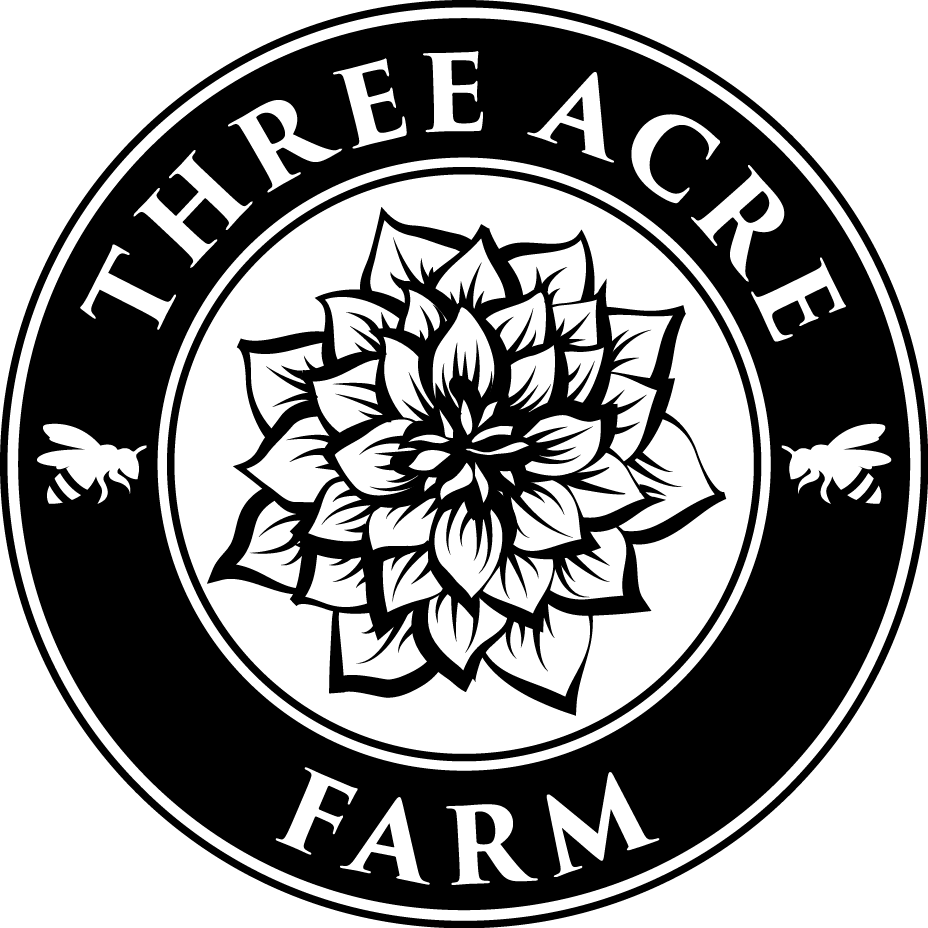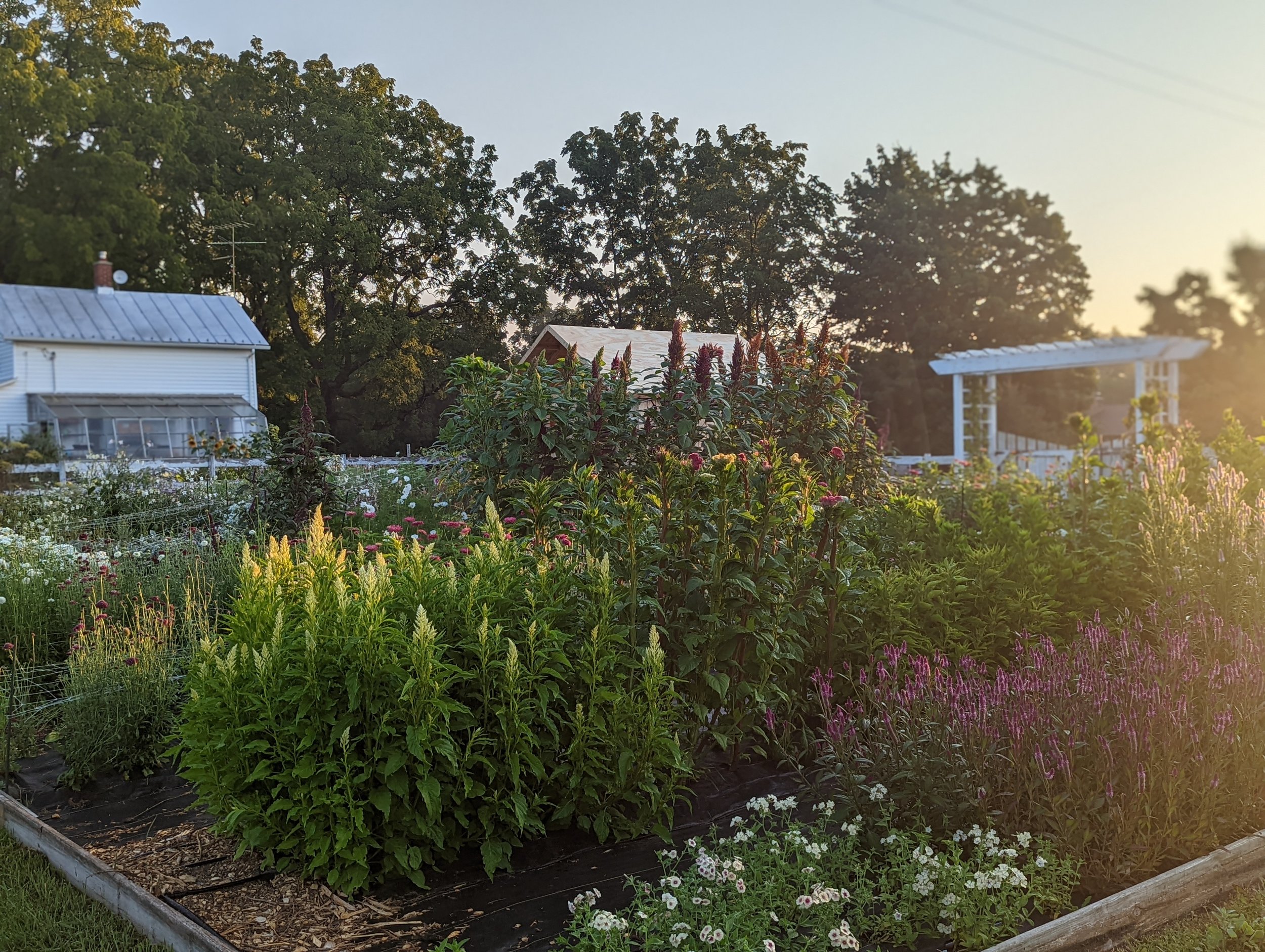Succession Planting: The Secret to Beautiful Blooms All Season Long
Succession Planting: The Secret to Beautiful Blooms All Season Long
Today I want to teach you a planting technique that will COMPLETELY change the way you grow cut flowers.
If you want to have beautiful blooms all season long, you’ve GOT to learn the skill of “Succession Planting”.
Don’t worry. It’s not hard.
But it DOES require some forethought and planning ahead.
Once you master Succession Planting, you can look forward to MONTHS of blooms, instead of just a few weeks.
1. First, I’m going to teach you the WHAT, WHY, WHEN and HOW of Succession Planting.
2. Next, I’ll share some suggestions of plants that are good candidates for Succession Planting.
3. Last of all, I’m going to show you what Succession Planting looks like on OUR farm, so you can see the progression from May - September. Be sure to check it out!
WHAT:
“Succession Planting” is a method of planting (either direct sowing or transplanting) flowers or vegetables multiple times over the growing season. Instead of “putting in the garden” on one day, the garden is planted in waves (successions) over the course of weeks.
WHY:
Succession planting has the following benefits:
Increases the amount of weeks that flowers are in bloom. Instead of just 4-6 weeks of blooms, you can get 12+ weeks of beautiful blooms.
Staggers the blooming time of plants to prevent “feast or famine” in the garden (everything blooming all at once… and then weeks with no blooms). Ex. If you plant 100 Sunflower seeds on the same day, they will all bloom within 1 week… and then you’ll have no Sunflowers for the rest of the season.
Removes the pressure to plant the entire garden all at once.
Alleviates space restrictions for seed starting. You don’t have to start all the seedlings at the same time. Instead, it can be done in waves, which frees up space for more seedlings.
If one succession gets destroyed by frost, heat, critters or disease, you have a back up plan!
WHEN:
For simplicity’s sake, let’s focus on Annual flowers that are planted out after the threat of frost is over. These flowers may be planted on or after your Average Last Spring Frost Date.
First, you need to know your “Frost Free Growing Period”, which is the space between your:
Average Last Spring Frost: This is “go time”, when it’s finally safe to plant out Annuals!
Average First Fall Frost: This is “killing frost” time, when the frost kills the Annuals and your season is over.
On our farm, these 2 dates are:
May 15 - Average Last Spring Frost
October 15- Average First Fall Frost
Remember, these are AVERAGE dates, so it’s possible that the frost could happen 2 weeks earlier or later than the average. It’s always a gamble!
On the seed pack, it will say how long it takes from “seed to bloom”. Once you know your Average First Fall Frost Date, you can work backward from that date to determine how late into the summer you can plant.
Ex. Zinnias take about 90 days to bloom. My First Average Fall Frost Date is Oct 15. If I want the Zinnias to bloom before frost, I need to count back about 100 days (always give them a week or two buffer time). The latest I can plant Zinnias and still expect them to bloom in time is around July 1.
I can start planting Zinnias around May 15 (Average Last Spring Frost Day). If I plant Zinnias about every 2-3 weeks, I could plant about 3-4 Successions of Zinnias to ensure that I have a constant supply of blooms.
Here’s a sample of how Succession Planting works on our farm:
1st Succession: May 15
2nd Succession: June 1
3rd Succession: June 15
*Make sure to read this entire post to see the photos at the end
HOW:
Getting a handle on Succession Planting can be a little tricky at first. So many of us have been trained to plant the garden all at once, so the idea of reserving areas to be planted in the future is a new concept.
I recommend dividing your planting areas into 2-3 different sections and then planting each section about 2-3 weeks apart.
Here’s how we do it on our farm:
I created 3 separate “planting blocks” that are planted at 3 different times over the season. Each block is a complete cutting garden, filled with the “ingredients” I need to create beautiful bouquets.
Once I had the plan made, I simply replicated the same basic plan in each block (I did change what colors I planted - brighter colors for earlier successions that would bloom in mid summer and more muted colors for successions that would bloom in late summer/early fall).
Basically, I planted the same cutting garden 3 times over the course of the season.
I found this was SO helpful for reducing overwhelm and confusion. I had clearly defined blocks, planted at clearly defined intervals, which helped me figure out when to start the seedlings.
You could easily take this same concept and use it in your garden.
Let’s say you have 6 raised beds or rows to plant in.
Plant the first 2 beds around your Average Last Spring Frost
Plant the next 2 beds about 2-3 weeks later.
Plant the last 2 beds 2-3 weeks after that.
Voila. You have a simple, effective succession plan for your garden to ensure you have beautiful blooms all season long.
TIPS:
Most Tender Annuals can be succession planted 2-3x over the season. Of course, there are ALWAY exceptions to this rule, but it’s a good starting point.
Fast growing plants, like Sunflowers that go from seed to bloom in 55 days, can have MULTIPLE successions over the season (up to 7-8 successions!). We sow Sunflowers every 10-14 days starting at our Average Last Spring Frost Date all the way until the end of August.
If you’re not sure how many successions you can plant, refer to the seed pack to learn how many days it takes from seed to bloom. Count backward from your Average First Fall Frost and calculate if there is enough time for the plant to bloom. Please note that plants grow faster around the Summer Solstice on June 21 (when there are the most daylight hours) and gradually grow slower as we head into autumn (when daylight hours are reduced). If you’re planting later in the season and it says 70-90 days to bloom, assume that it will take 90 days.
After the 1st succession starts getting tired (ragged looking, going to seed, etc), you have a few options: You could pull out the plants and put in a succession of fast growing Sunflowers OR you could cut back the plants HARD, to about 6” tall and see what happens. The plants might regrow and give you a 4th succession of blooms that comes on just as the 3rd succession is starting to wane!
GOOD CANDIDATES FOR SUCCESSION PLANTING
While some Annuals need to be started indoors and transplanted, others can be direct sown as seeds right into the garden (like Amaranth, Cosmos, Sunflowers and Zinnias), making them great candidates for easy Succession Planting.
Ammi (False Queen Anne’s Lace)
Cress
Dara
Dill
Ornamental Annual grasses (click here to purchase my favorite types)
Phlox (annual type) (click here to purchase my favorite types)
Our Succession Planting Strategy
Let me show you what our Succession Planting Blocks looked like over the season. It’s really exciting to see the progression of the blocks!
Remember, we planted 3 successions on roughly:
1st Succession: May 15
2nd Succession: June 1
3rd Succession: June 15
May 17, 2022 - Seedlings planted into 1st Succession Planting Block
June 7, 2022 - 1st Succession Planting Block about 3 weeks after being planted/direct sown
June 20, 2022 - View of 1st Succession Planting Block (foreground) and 2nd Succession Planting Block (background)
July 3, 2022 - View of 3rd Succession Planting Block (foreground), 2nd Succession Planting Block (middle ground), and 1st Succession Planting Block (background)
July 5, 2022 - 1st Succession Planting Block beginning to bloom, 8 weeks after being planted
July 14, 2022 - 1st Succession Planting Block in full bloom 9 weeks after planting
August 10, 2022 - 2nd Succession Planting Block in bloom 10 weeks after planting
August 10, 2022 - 1st Succession Planting Block starting to fade and get tired about 12 weeks after planting. We cut back all the plants in mid August… and they rebloomed again in late September!
August 13, 2022 - View of 3rd Succession Planting Block starting to blooms (foreground), 2nd Succession Planting Block in full bloom (middle ground) and 1st Succession Planting Block starting to fade (background)
August 20, 2022 - 2nd Succession Block in full bloom 11 weeks after planting
August 24 - 3rd Succession Planting Block starting to bloom 10 weeks after planting
September 20, 2022 - 1st Succession Planting Block reblooming after being cut back in August… which means we actually got 4 Successions!
July 7, 2023 - Sunflowers are grown in their own Succession Planting Block. We prepare the entire block at the beginning of the season and cover the waiting beds with tarps (to prevent weeds from growing) until we’re ready to plant that bed. We direct sow 8 successions of Sunflowers over the season, starting in mid May and ending in early August. This gives us a steady supply of Sunflowers from July - Oct.
I hope this Blog Post encourages and inspires YOU to try Succession Planting too.
Happy planting!
Ready for more?
If you’re serious about growing the garden of your dreams this year, register for my online course, “Backyard Cutting Garden 101”. You’ll find everything you need to plan, grow, harvest and arrange your stunning blooms. I can’t WAIT to help you grow! Click on the button below for all the details.













